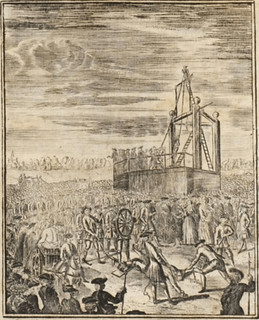
PREV ARTICLE
NEXT ARTICLE
FULL ISSUE
PREV FULL ISSUE
A THEFT AT THE ROYAL COIN CABINETLast week we reported on two high-profile coin burglaries. Coin thieves were harshly dealt with in 1700s Germany, as shown by a Bookophile blog article published this week. Bookophile is a project of the Zurich MoneyMuseum in cooperation with CoinsWeekly, featuring information on the history of and the market in books printed mainly between 1500 and 1800. The stories are a great source for the history of ideas, mind and everyday life in that period. Here's an excerpt from the article by CoinsWeekly editor Ursula Kampmann. -Editor
At this point, his accomplice lost his cool. He claimed in writing that there had been a robbery at the royal coin cabinet. Stieff only picked up one of the coins that had been dropped by the robbers. This seemed strange to the authorities. Runck was arrested and he confessed the crime while being tortured. The Punishment
Be sure to read the complete article and learn why the spectators at the time thought the harsh punishment to be fair and just. Bookophile is published online every two weeks on Wednesday. To subscribe to the English version, see:
To read the complete article, see:
To read the earlier E-Sylum article, see:
 Wayne Homren, Editor The Numismatic Bibliomania Society is a non-profit organization promoting numismatic literature. See our web site at coinbooks.org. To submit items for publication in The E-Sylum, write to the Editor at this address: whomren@gmail.com To subscribe go to: https://my.binhost.com/lists/listinfo/esylum All Rights Reserved. NBS Home Page Contact the NBS webmaster 
|
